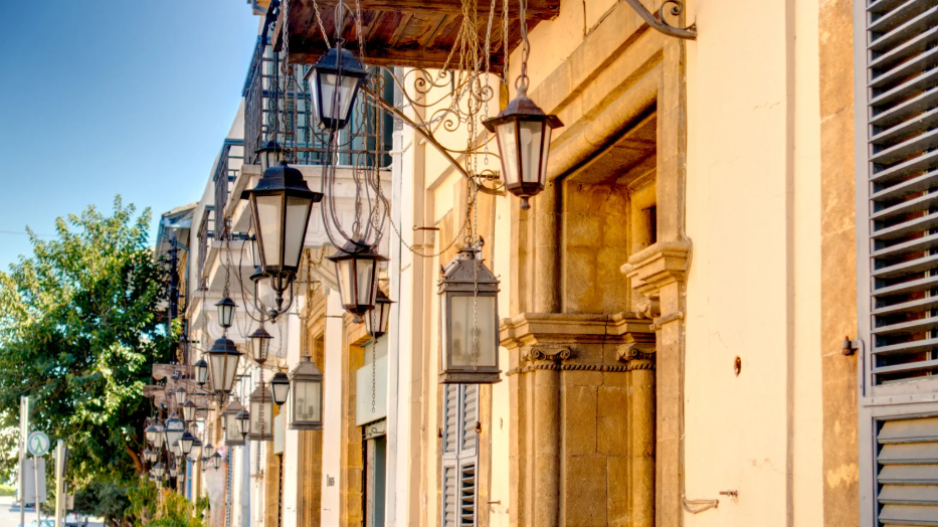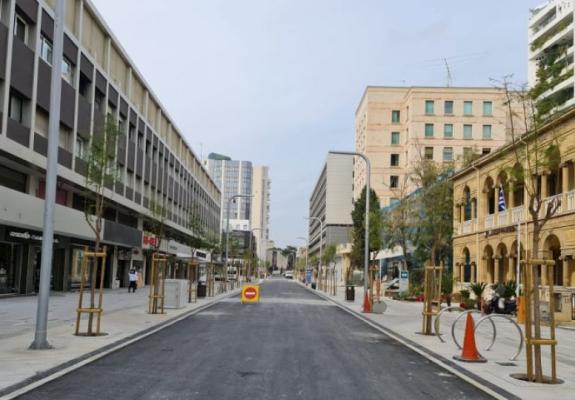The Quiet Renaissance of Nicosia’s Old Town
Art, Coffee, Co-working, and the Blend of History with Hipness.
Once seen as a quiet, somewhat forgotten quarter of the capital, Nicosia’s Old Town is undergoing a subtle but powerful transformation. Within its Venetian walls and along its narrow streets, a new cultural rhythm is emerging—one that merges art, design, and entrepreneurship with the soul of a centuries-old city. From bohemian cafés and co-working hubs to art spaces, a new generation is breathing fresh life into the city’s historic heart.
Based on all of the above, it is no wonder that the University of Athens recently came to an agreement with the Municipality of Nicosia to use buildings in the old town to open medical and nursing schools.
Furthermore, the Cypriot government, aiming to aid this revitalisation in providing incentives for citizens to purchase property within Nicosia’s old town, with benefits rising up to €75,000 in certain cases.
But what’s driving this quiet renaissance, and how is the Old Town becoming one of the most dynamic corners of urban Cyprus?
Nicosia’s Old Town has always held a certain charm with its stone-paved streets, intricate balconies, and a blend of Ottoman, Venetian, and British colonial architecture nestled alongside Byzantine churches and former merchant houses. But for decades, the area seemed caught between eras: too precious to change, too worn to thrive. Now, a new energy is transforming these same streets.
But for decades, the area seemed caught between eras: too precious to change, too worn to thrive.
Rather than displacing history, the revival is deeply rooted in it. Artists and creatives are moving into restored homes, not just to live or work, but to reinterpret these spaces as open studios, event venues, and cultural labs. Galleries, like Diachroniki and Korai Project Space, as well as artist residencies are drawing both local and international attention, while artistic initiatives like Sessions—a series of queer happenings, reimagining the relationship between art and space—make creative expression more accessible to the public.
Independent cafés and bars, such as 7 Kleidia, Swimming Birds, Yalla, and Ta Kala Kathoumena have also become key players in this shift. These aren’t just coffee shops—they double as performance venues, local craft outlets, and community gathering points. Many are housed in preserved buildings, retaining original façades and interiors while introducing modern design and sustainable materials. It's heritage reimagined, one cup of coffee at a time.
Parallel to this cultural awakening is the emergence of co-working hubs and studios that cater to a new breed of professionals. Remote workers, entrepreneurs, designers, and tech developers are choosing Nicosia’s Old Town for its character, affordability, and increasingly vibrant atmosphere.
Spaces like Yfantourgeio TheWorkplace, Axess Workspace, CYENS and The Base by CyprusInno have become anchors for a young professional scene, offering more than just desk space. With curated events, art collaborations, and networking nights, these hubs are turning the area into an urban think tank—one that respects its setting but is oriented firmly toward the future.
The appeal lies in contrast: working on a laptop in a centuries-old building while sipping locally roasted coffee and listening to a vinyl DJ set isn’t just functional—it’s aspirational. For many, the Old Town offers a work-life blend that’s hard to replicate in Cyprus’ more modern neighborhoods or generic office parks.
The rebirth of the Old Town also involves a renewed focus on handmade and hyperlocal. Artisan shops are popping up in former hardware stores and bakeries, offering everything from ceramics and textiles to organic skincare and books by Cypriot authors.
Businesses like Old Classic Thrift Shop, and STAART Shop, as well as the renowned neighbourhood, “Laiki Geitonia” often share a common philosophy: slow production, ethical sourcing, and community engagement. Workshops, late-night openings, and local collaborations are part of the experience, transforming everyday retail into a cultural exchange.
Even residential development is following this trend. While some buildings are being renovated into boutique hotels and Airbnb rentals, others are being sensitively restored as primary homes by young creatives and returning Cypriots. The result is a sense of community that feels authentic, not staged—where neighbors are collaborators and the line between private and public space is constantly blurred.
As word spreads, the Old Town has become a magnet for a different kind of visitor—one who values experience over sightseeing. These travelers seek out the indie gallery before the museum, the courtyard concert over the festival, and the family-run guesthouse over the five-star hotel.
Tourism boards and local developers are beginning to respond, promoting Nicosia not just as the capital of Cyprus but as a capital of creative living. This includes walking tours that spotlight restored buildings, and culinary experiences rooted in local ingredients.
Local movie nights, and film festivals are helping shape a new narrative for the city—one that’s less about monuments and more about momentum.
Still, the renaissance is not without its tensions. Gentrification, rising rents, and over-tourism are already becoming points of concern. Some fear that too much attention could price out the very creatives and communities who sparked the change.
Yet many of the area’s changemakers are aware of these risks and are advocating for inclusive growth. Initiatives that support artists, prioritize local hiring, and promote sustainable tourism are beginning to take shape. There is a collective effort to keep the Old Town’s evolution organic, not engineered.
The challenge moving forward will be scale—how to invite more people in without losing the intimate, street-level character that makes the area so special.






